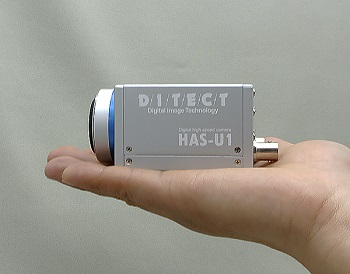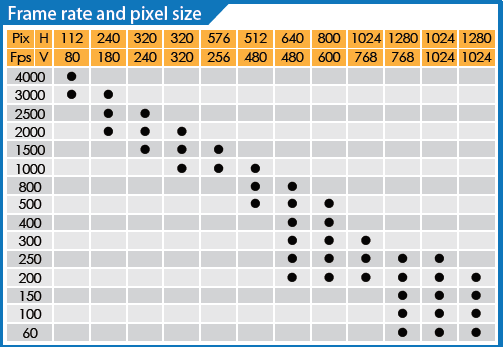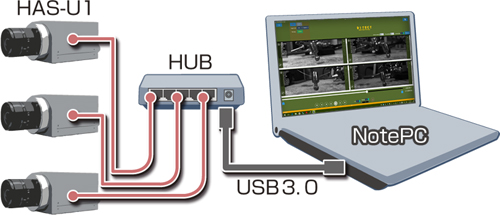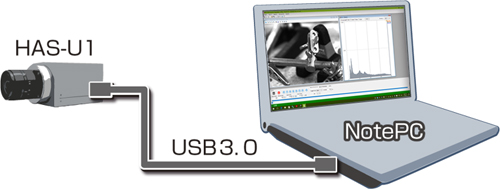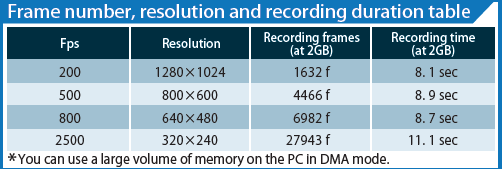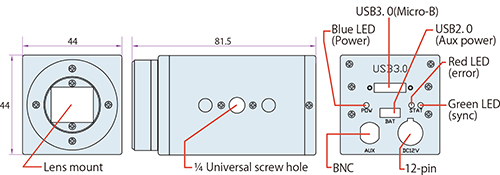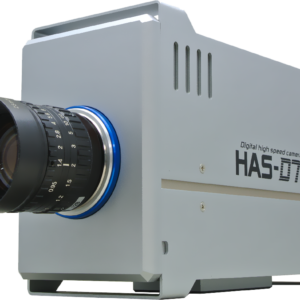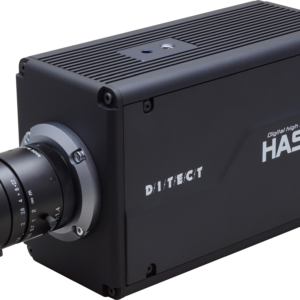Description
Technical Specifications and Features
The HAS-U1 high-speed camera is designed for advanced imaging applications, featuring a ½-inch CMOS sensor that ensures superior performance in various settings. With its effective pixel count, this camera captures images with remarkable clarity and detail, making it ideal for both research and engineering purposes. The sensor supports impressive frame rates and operating modes, catering to diverse requirements across different fields.
One of the standout capabilities of the HAS-U1 is its ability to achieve full resolution at 200 frames per second (fps). This allows users to obtain high-quality footage for analysis without compromising on the integrity of the images. Furthermore, the camera possesses the unique ability to ramp up its frame rate to an astonishing 4,000 fps by adjusting the pixel area. This flexibility enables the capture of rapid events in real-time, providing comprehensive insights that are critical for experimental research and technological development.
Its compact size and lightweight design enhance the usability of the HAS-U1, making it easy to transport and deploy in various environments. These features are essential for researchers and engineers who often operate in dynamic and challenging conditions. Additionally, the camera demonstrates efficient power consumption, extending battery life during extended use or within field operations. This aspect not only reduces the need for frequent recharging but also contributes to a more sustainable workflow.
Incorporating such technical specifications, the HAS-U1 high-speed camera stands out as a powerful tool, combining functionality and practicality. Whether for high-speed video capture or detailed motion analysis, its advanced features streamline the process, making it an invaluable asset in various applications. Through such capabilities, users can achieve precise results while maintaining an efficient working environment.
Applications and Use Cases
The HAS-U1 high-speed camera has gained prominence across various fields due to its advanced imaging capabilities and high-performance specifications. One of the significant applications of this camera is in behavioral studies where researchers observe and analyze intricate movements and reactions in both human and animal subjects. With the ability to capture high-speed events with remarkable precision, the HAS-U1 allows scientists to study behaviors that occur too rapidly for standard cameras, providing invaluable insights into neurological responses or motion sequences.
In the realm of fluid dynamics, this sophisticated camera facilitates the detailed observation of fluid flows, enabling researchers to visualize and analyze turbulent events or the behavior of different fluids under varying conditions. The high-speed imaging capabilities permit capture of rapid phenomena such as cavitation or droplet formation, proving essential in both educational and industrial research settings.
Sports science also benefits significantly from the HAS-U1. Coaches and athletic trainers utilize this camera to monitor athletes’ movements, allowing for refined biomechanical analysis. By synchronizing high-speed recordings with performance metrics, professionals can identify areas for improvement and provide tailored training, ultimately enhancing athletic performance while minimizing injury risk.
Additionally, the integration of embedded memory and synchronization features makes the HAS-U1 indispensable in applications like robotics and machine vision. These settings often require simultaneous imaging and precise timing to ensure optimal performance and evaluation of component functionality. Furthermore, in critical environments such as crash testing, the camera captures rapid impacts in high detail, allowing engineers to assess safety features and vehicle behavior during collisions.
Moreover, with the help of sophisticated software features, including adjustable frame rates and advanced image processing functionalities, the HAS-U1 high-speed camera stands as a versatile tool, effectively catering to the diverse needs of multidisciplinary research and application scenarios.

